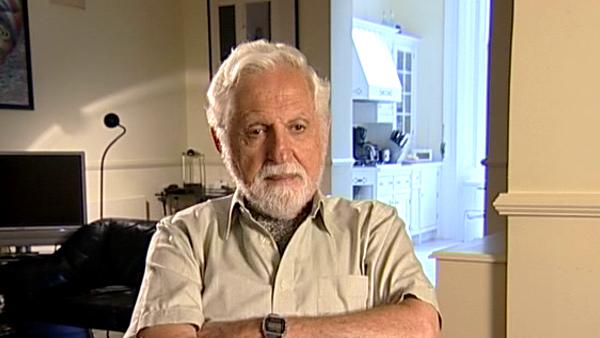NEXT STORY

Using artificial intelligence in chemistry
RELATED STORIES

NEXT STORY

Using artificial intelligence in chemistry
RELATED STORIES


|
Views | Duration | |
|---|---|---|---|
| 81. Having my cake and eating it | 85 | 04:03 | |
| 82. Working on natural products chemistry | 94 | 07:17 | |
| 83. The most important contribution that I made in science | 56 | 03:40 | |
| 84. Women's contribution to X-ray crystallography | 175 | 04:36 | |
| 85. Chiroptical methods and mass spectrometry | 80 | 07:17 | |
| 86. Non-destructive spectroscopic methods | 64 | 03:33 | |
| 87. Analysis of all my papers by Eugene Garfield | 86 | 01:48 | |
| 88. Using artificial intelligence in chemistry | 137 | 07:52 | |
| 89. Marine chemistry: discovering new sterols | 72 | 05:58 | |
| 90. Work on sponges: setting up underwater labs | 54 | 02:18 |


In the 1960s, late '60s, which was probably the most productive time of mine... It’s very interesting, someone at... a man named Eugene Garfield, who is one of the pioneers in, really, Information Technology, and has developed all kinds of ways of analysing bibliographically, references and citations in literature, which is what it’s all about in science, that’s all we leave behind. And he decided to just take me as an example. He sent me an email, which I haven’t even answered yet, because it’s so involved, where he’s taken my 1,200 papers, and analysed them, in terms of who cited them, so you get into these tens of thousands of papers, who cited them, and he sent me all this, so that I can go and look through this, for which I unfortunately don’t have the time, even though I think it would make me feel better if I read this. But then he gave a bar graph, which interestingly enough I’d never done myself which is how many papers I’d published in a given year, and it’s a complete Gaussian distribution curve, and there was actually one year, and I couldn’t even believe this, a couple of years where I published over 60 papers in a year. And I thought, my god, over a paper a week, and the ironic thing is that for that time I still wrote every one of these papers. The first 600 or so papers I really, literally wrote the first draft. I then changed my mind, because I realised that I was very well organised and knew how to do this, but I have to teach that to my students, from then on I switched around and said, you write the first draft, and I will correct it and comment on it, which in fact took much longer, but of course was I think pedagogically much more useful.
Austrian-American Carl Djerassi (1923-2015) was best known for his work on the synthesis of the steroid cortisone and then of a progesterone derivative that was the basis of the first contraceptive pill. He wrote a number of books, plays and poems, in the process inventing a new genre, 'science-in-fiction', illustrated by the novel 'Cantor's Dilemma' which explores ethics in science.
Title: Analysis of all my papers by Eugene Garfield
Listeners: Tamara Tracz
Tamara Tracz is a writer and filmmaker based in London.
Tags: Gaussian distribution, Eugene Eli Garfield
Duration: 1 minute, 48 seconds
Date story recorded: September 2005
Date story went live: 24 January 2008